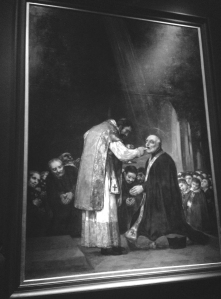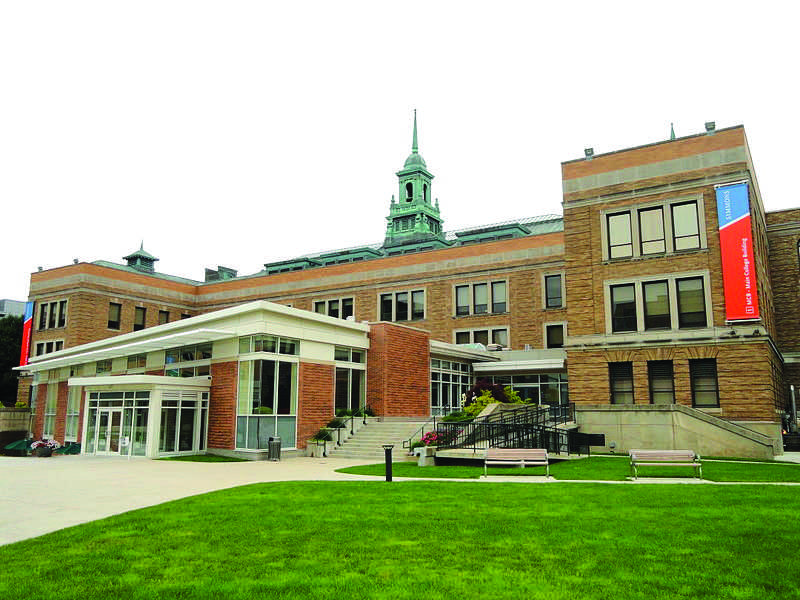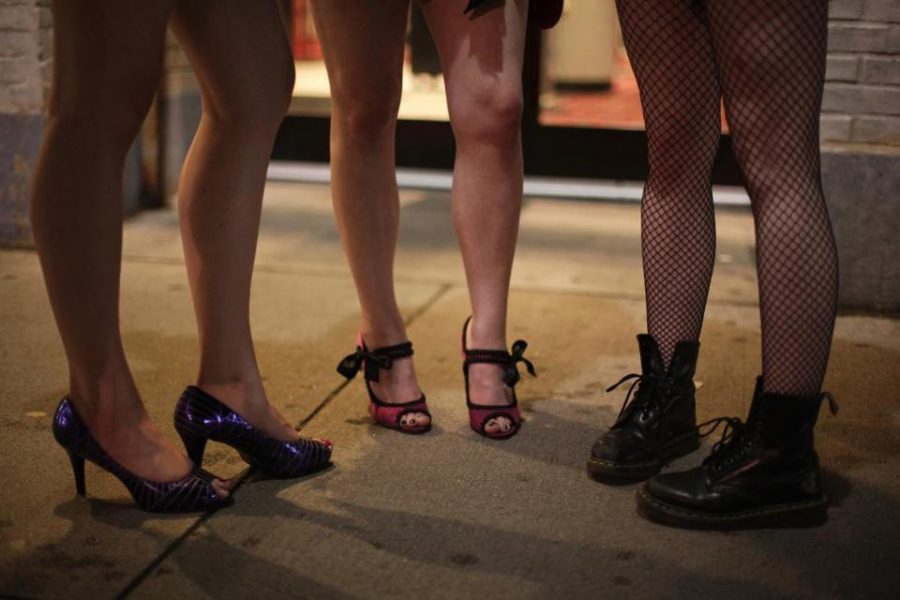By Jillian Jennett
Contributing Writer
 Francisco Goya is known as one of the greatest artists of the late 18th and early 19th centuries, and as the most important Spanish painter of all time. A renowned Romantic period artist, portraitist, and the last of the Old Masters, he is kind of a big deal. We are lucky enough to be living down the street from the largest collection of his works in 25 years.
Francisco Goya is known as one of the greatest artists of the late 18th and early 19th centuries, and as the most important Spanish painter of all time. A renowned Romantic period artist, portraitist, and the last of the Old Masters, he is kind of a big deal. We are lucky enough to be living down the street from the largest collection of his works in 25 years.
Goya uses a variety of mediums in his work, from what the casual observer would call “messy” first sketches all the way to artfully painted oil on canvas. The experience of moving from room to room through the exhibit is simply something that you have to experience to understand. The use of shadow, light, and everything in between captures a certain kind of joy and sadness one does not find in many pieces.
“Goya: Order and Disorder” is the fruit of a five-year-long labor by Frederick Ilchman and Stephanie Loeb Stepanek, two of the MFA’s top curators, who collaborated with hundreds of individuals both in and outside of Boston to bring this truly incredible exhibit to life. Getting one of the Old Master’s works is not easy, but nearly a hundred is almost unheard of. They managed to accomplish the impossible and truly gave the city of Boston a gift.
The exhibit on display is the first of its kind, organizing his works not by year or by collection, but by mood and theme. The exhibit contains 99 of Goya’s works from 44 lenders worldwide. The varied collection hails from museums such as the Louvre, the Metropolitan Museum of Art, as well as several private collections, with 15 of these works never before seen in the U.S., or even the North American continent.
As Simmons students, we get to see it for free. You may or may not know that, if you show the MFA employee at the ticket desk your Simmons ID, you get access to every exhibit in the museum. While it’s tempting to skip over Goya’s secluded hiding place, down a flight of stairs from the main atrium, it is truly worth it.
Act fast! This exhibit will be gone by Jan. 19, so if you don’t catch it before second semester starts up again, you just might miss out on the exhibit of a lifetime.




















